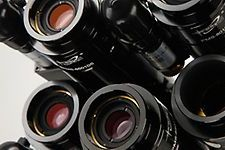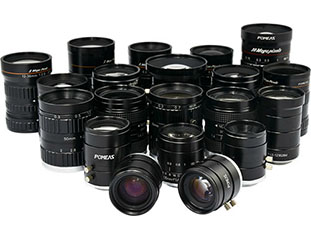In the field of machine vision, the choice of lens is critical to image quality. In describing the lens size or sensor size, we often encounter the “inch” unit. So, machine vision lenses in the “inches” in the end what does it mean? Is it the same as our daily use of the unit of inches?


Definition of inches in machine vision lenses


The inch is a British unit of length, and 1 inch is equal to 2.54 centimeters. In everyday life, inches are commonly used to describe screen size, paper size, etc. In machine vision lenses, the inch does not directly represent the physical size of the lens, but rather relates to the size of the image sensor. Specifically, it refers to the diagonal length of the image sensor, but this length is not the actual diagonal length, but a historical approximation.
Historical Background on Inches in Machine Vision Lenses
Early television camera tubes (such as photoconductive camera tubes) used circular light-sensitive areas whose diameters were usually measured in inches. For example, a 1-inch camera tube has a light-sensitive area of about 16 millimeters in diameter. As technology evolved, camera tubes were replaced by solid-state image sensors (e.g., CCD and CMOS), but the unit of inches was still used.
Actual size
In modern machine vision, the size of an image sensor is usually expressed in inches, but this size is not the actual diagonal length. For example, the diagonal length of a 1-inch sensor is not 25.4 millimeters, but about 16 millimeters. This is because the size standard for 1-inch sensors is based on early camera tube specifications, and the actual diagonal length of the light-sensitive area is about 16 mm.
Common Sensor Sizes
Here are some common image sensor sizes and their corresponding diagonal lengths:
① 1/4-inch sensor: diagonal length of approximately 4 mm
② 1/3-inch sensor: diagonal length of approximately 6 mm
③ 1/2-inch sensor: diagonal length of approximately 8 millimeters
④ 2/3-inch sensor: diagonal length approx. 11 mm
⑤ 1-inch sensor: diagonal length approx. 16 mm
Inches & Lens Selection


In a machine vision system, the matching of the lens to the sensor is very important. The imaging circle of the lens needs to cover the light-sensitive area of the sensor, otherwise dark corners or blurred image edges will occur. Therefore, when choosing a lens, you need to choose the right lens according to the size of the sensor.
1 Lens imaging circle
The imaging circle of the lens is the largest circular area that the lens can clearly image. If the imaging circle of the lens is smaller than the size of the sensor, the edges of the image will appear dark corners or blurred. Therefore, when choosing a lens, the imaging circle of the lens should at least match the diagonal length of the sensor.
2 Lens focal length
The focal length of the lens determines the angle of view and magnification. The shorter the focal length, the wider the viewing angle; the longer the focal length, the narrower the viewing angle. When choosing a lens, you need to select the appropriate focal length according to the application requirements to ensure that you can capture the required field of view range.
Product recommendation
TECHNICAL SOLUTION
MORE+You may also be interested in the following information
FREE CONSULTING SERVICE
Let’s help you to find the right solution for your project!


 ASK POMEAS
ASK POMEAS  PRICE INQUIRY
PRICE INQUIRY  REQUEST DEMO/TEST
REQUEST DEMO/TEST  FREE TRIAL UNIT
FREE TRIAL UNIT  ACCURATE SELECTION
ACCURATE SELECTION  ADDRESS
ADDRESS Tel:+ 86-0769-2266 0867
Tel:+ 86-0769-2266 0867 Fax:+ 86-0769-2266 0867
Fax:+ 86-0769-2266 0867 E-mail:marketing@pomeas.com
E-mail:marketing@pomeas.com
